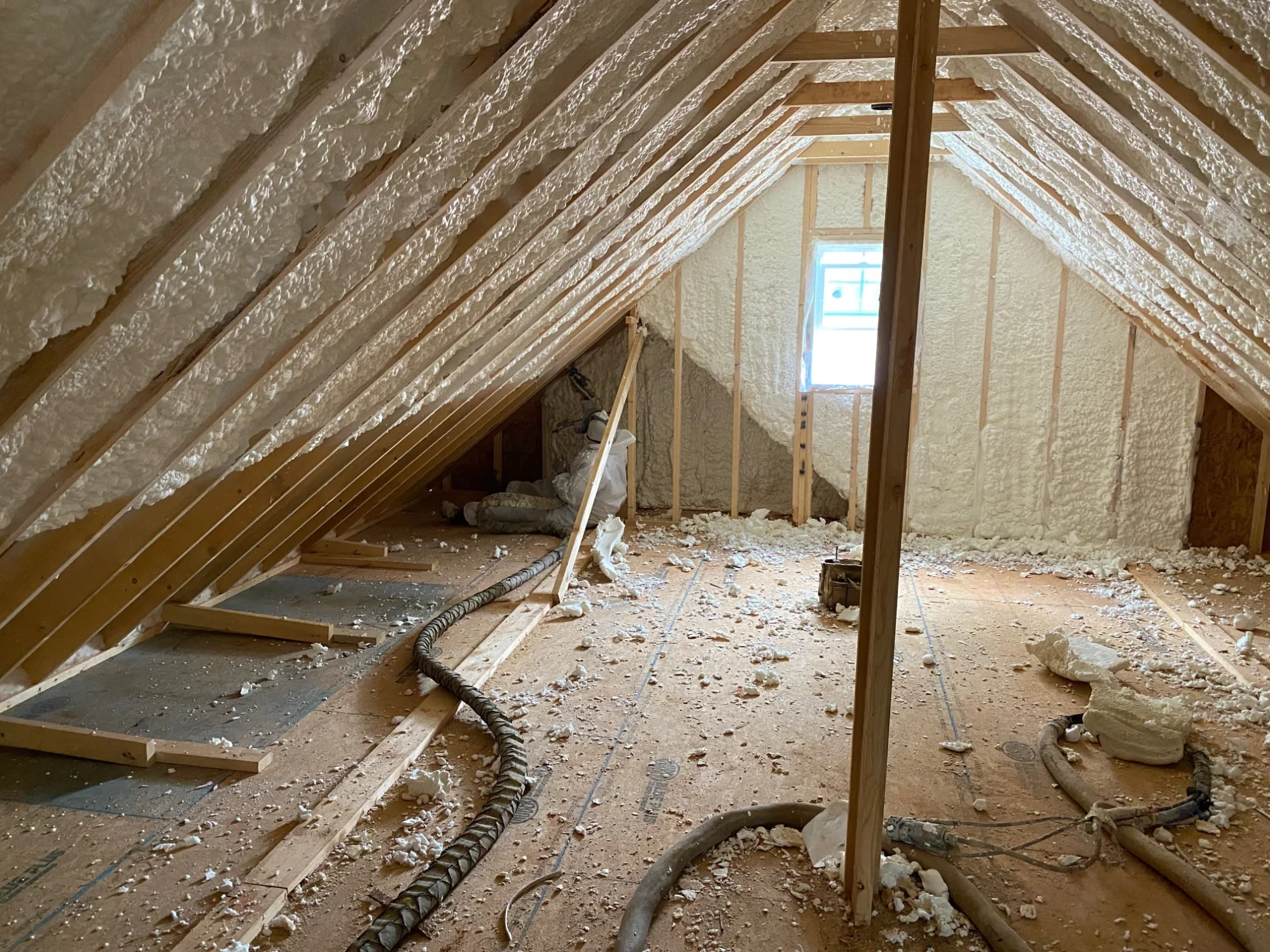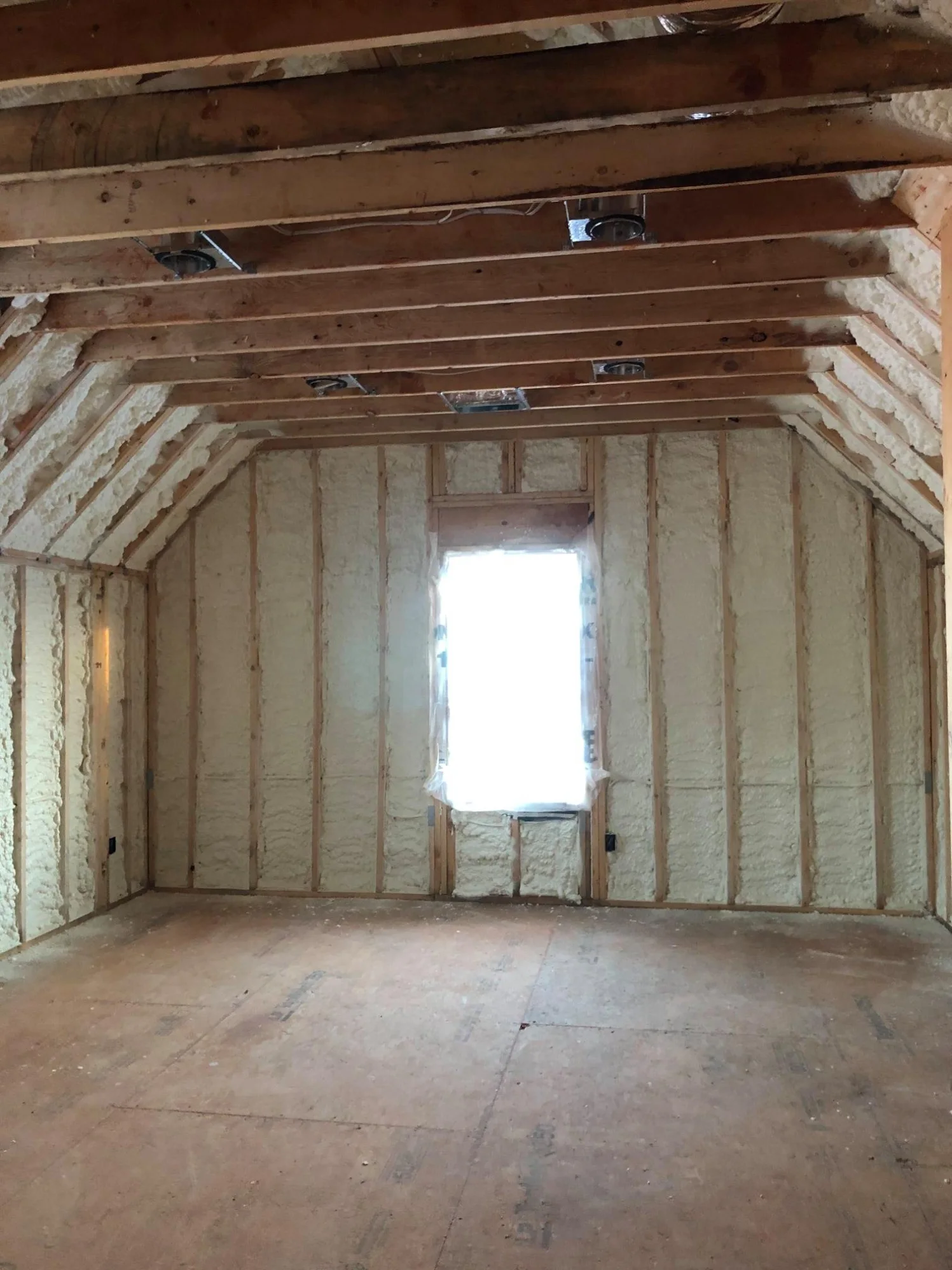
Most homes in Overland Park should consider upgrading insulation when indoor temperatures fluctuate noticeably between rooms, HVAC systems run longer than usual, or energy bills rise without a clear reason. In this region, extreme seasonal temperature shifts make insulation performance critical. Upgrading becomes necessary when insulation is outdated, compacted, or fails to meet current energy-efficiency standards.
Homes built before 1990 often lack sufficient insulation for current climate control needs. Inspections should focus on attics, crawl spaces, and wall cavities. Spray foam solutions, particularly closed cell or open cell spray foam, provide superior air sealing and moisture control. Ozark Eco Foam applies field experience to identify insulation inefficiencies specific to local construction trends and climate patterns.
Several physical, environmental, and structural indicators show when insulation is no longer effective. These symptoms often appear gradually but increase heating and cooling demands substantially.
| Condition or Symptom | Likely Cause | Upgrade Required |
|---|---|---|
| Cold drafts near windows or floors | Air leaks through weak seals | Yes |
| Ice dams on roof in winter | Heat escaping into attic | Yes |
| Mold or mildew near insulation | Poor moisture control | Yes |
| Uneven room temperatures | Inconsistent insulation coverage | Yes |
| Rodents or pests inside insulation | Contamination or nesting | Yes |
| Increased indoor allergens | Insulation fiber breakdown | Possibly |
Overland Park,KS experiences humid summers and cold winters, placing stress on underperforming insulation. Homes here require materials that handle both moisture management and thermal resistance.
| Area of Home | Recommended R-Value | Typical Existing R-Value (Pre-1990) |
|---|---|---|
| Attic | R-49 to R-60 | R-19 to R-30 |
| Walls (2×4/2×6) | R-13 to R-21 | R-7 to R-11 |
| Floors over crawl | R-25 to R-30 | R-11 to R-19 |
Bonus Tip: Homes with finished basements often overlook rim joists and band joist areas. These small gaps can leak considerable air and humidity if not properly sealed.
| Spray Foam Type | R-Value per Inch | Moisture Barrier | Best Use Areas |
|---|---|---|---|
| Closed Cell | 6.0 to 7.0 | Yes | Crawl spaces, rim joists |
| Open Cell | 3.5 to 3.7 | No | Interior walls, attics |
| Fiberglass Batt | 2.9 to 3.8 | No | Framing cavities |
Bonus Tip: Closed cell spray foam doubles as a structural reinforcement. It adds shear strength to pole barns and framing cavities.
Bonus Tip: Always conduct a blower door test after insulation upgrades. It verifies improvements in air tightness and helps detect any missed leakage points.

If insulation crumbles when touched, shows water staining, or no longer rebounds when compressed, it is likely past its effective lifespan.
Only if the existing insulation is dry, clean, and uncompacted. Otherwise, removal is recommended to avoid trapping moisture or pests.
Yes, when applied by certified installers. Once cured, it emits no harmful gases and remains inert.
Most spray foam projects in single-family homes take 1–2 days, depending on square footage and area accessibility.
If indoor comfort varies from room to room or utility bills continue rising despite efficient HVAC systems, upgrading insulation may be overdue. Check attic and crawl spaces first. Use performance data, climate relevance, and visible symptoms as your guide.
Avoid applying new material over degraded layers and confirm ventilation health before sealing cavities. Choose the right material for the space, focusing on both R-value and moisture performance.
For homeowners in Overland Park considering insulation upgrades, Ozark Eco Foam provides guidance backed by field experience and local expertise. Contact at (417) 572-5893 or email ozarkecofoam@gmail.com to schedule an assessment or ask specific technical questions. All inspections and recommendations are based on current building science standards and region-specific performance needs.
Not actively. However, regular attic inspections (every 2–3 years) help detect early signs of degradation or pests.
Closed cell and open cell spray foams can perform effectively for 20–30 years when properly installed.
Yes. Improved insulation reduces run time and cycling, extending HVAC equipment life.
In many cases, yes. Homes with severe air leaks often see reduced utility usage within the first billing cycle post-upgrade.
Depending on the municipality, yes. Some counties require permits for spray foam applications. Local code compliance should always be verified.